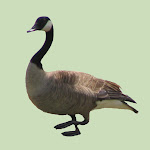The gradual rise in gray whale populations (good news!) is having a positive effect on other recovering species in the adjacent areas of Puget Sound (more good news!), going so far as to keeping wildlife off the already 60-species-long Endangered Species list (great news!).
Firstly, the UC Davis SeaDoc Society happily reports the growing numbers of gray whales near Sandy Point on Whidbey Island, about 30 miles north of Seattle. As the San Juan Islander explains, "Gray whales suction-feed, sieving out ghost shrimp and other small sea animals from the sea floor. As they eat, the whales create giant pits and stir up clouds of invertebrates, which settle back to the bottom and flourish in the altered landscape left after the whales have passed." That means that the more whales nuzzling around in the bottom of the ocean, the more food there is for birds who dine on what gets brought up. That's a win-win, baby!
Researchers observed sea ducks (surf scoters and white-winged scoters) sticking close by gray whales and diving under the water in their wake. This is important because it's the first time the symbiotic relationship between cetaceans and birds that feed on the sea bottom has been officially documented.
SeaDoc Society Director Joe Gaydos summed up this good news quite well:
“Usually we are trying to deal with endangered species eating other endangered species, so this evidence that the recovery of one species could benefit the recovery of other is a welcome breath of fresh air.”
The SeaDoc Society, "working to ensure the health of marine wildlife and their ecosystems through science and education":
www.seadocsociety.org
for the original story:
http://www.sanjuanislander.com/groups/seadoc/gray-whale.shtml
for lyrics to the song Fish & Bird by Tom Waits, a slightly more romantic, slightly less realistic take on a similar situation:
http://www.sing365.com/music/lyric.nsf/Fish-Bird-lyrics-Tom-Waits/C07140AFAD07BE4E48256BBC0027375F
Friday, July 4, 2008
Subscribe to:
Comments (Atom)
